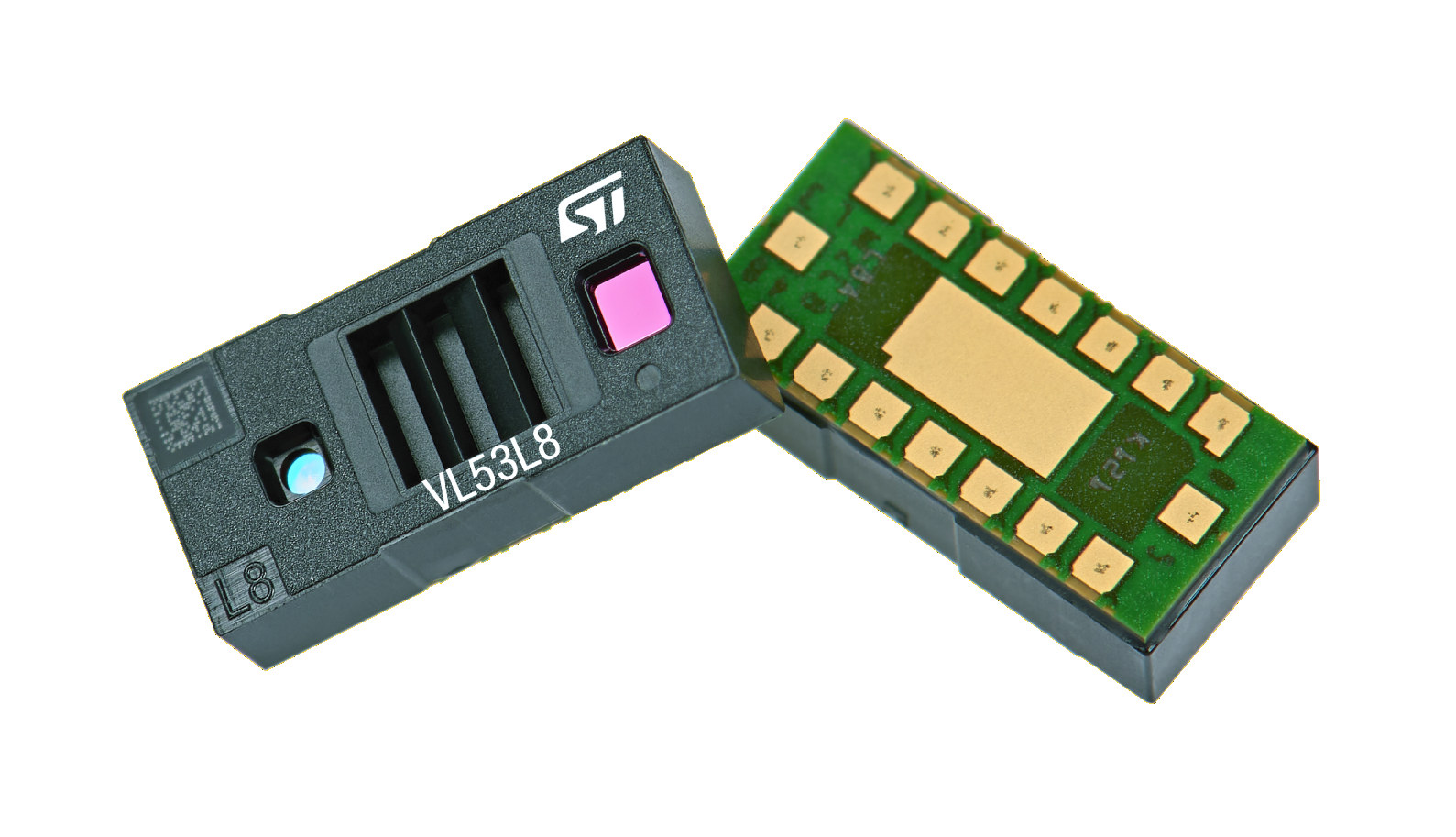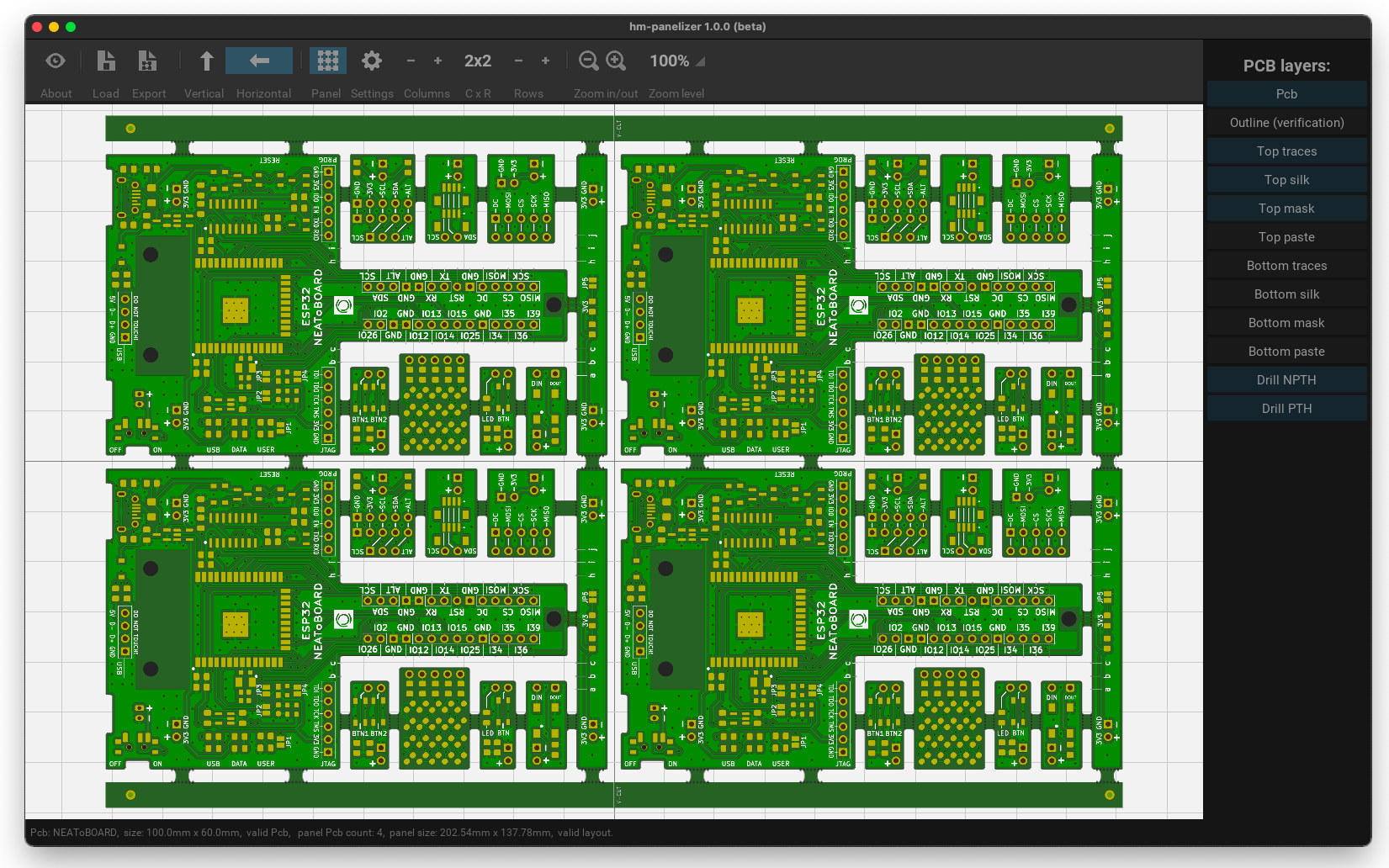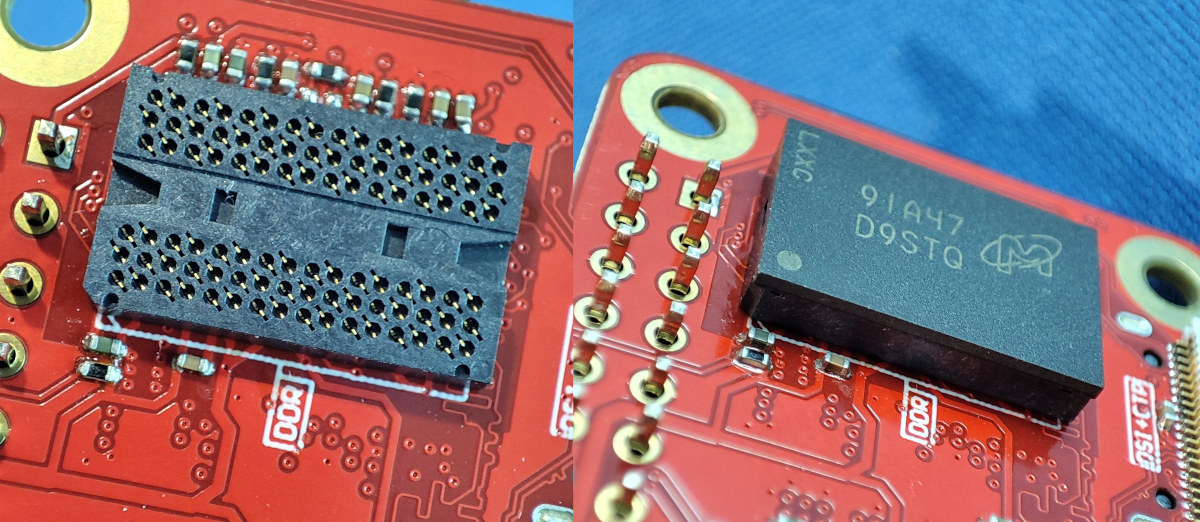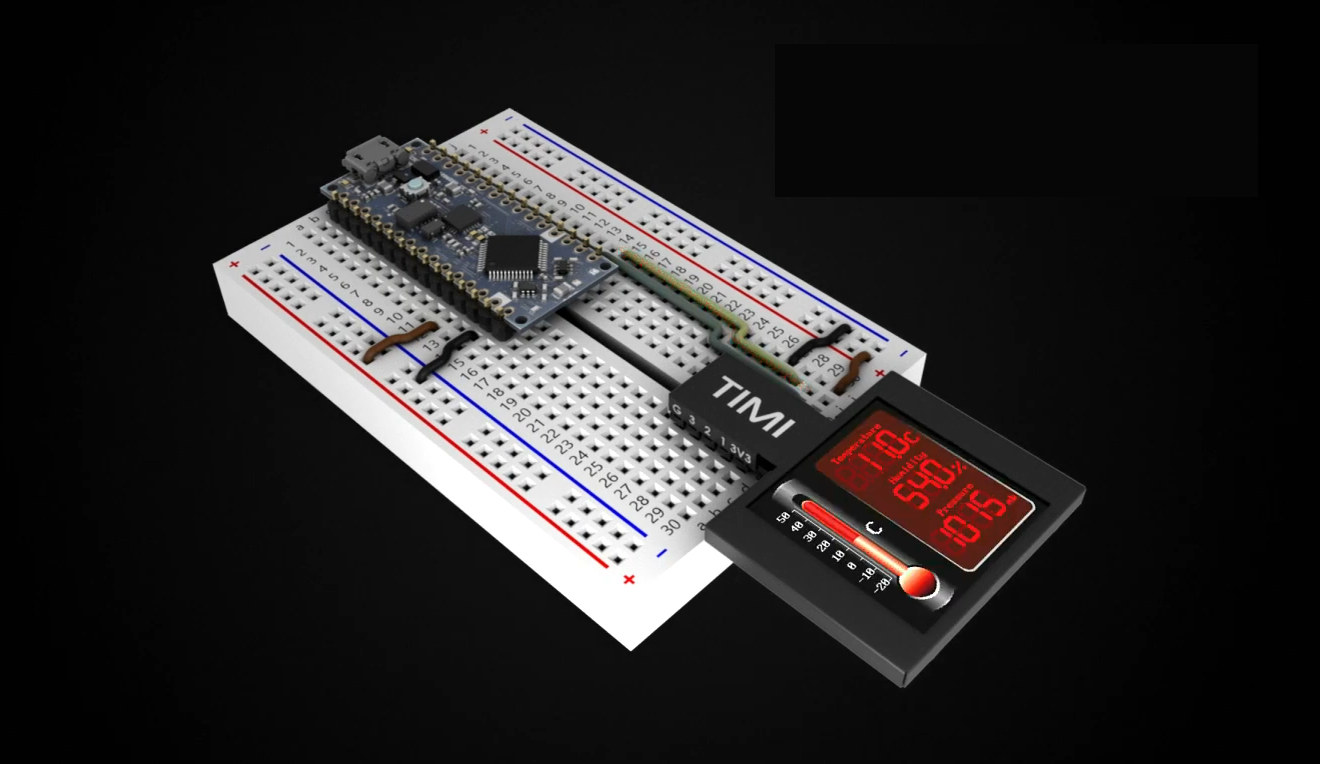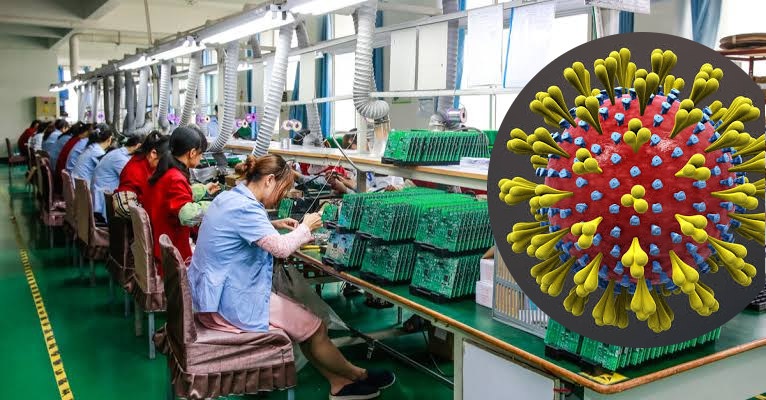STMicro VL53L8 multi-zone direct Time-of-Flight (dToF) sensor doubles the ranging performance of VL53L5 sensor – up to 4 meters – or reduces the power consumption by half when operating in common conditions. STMicro ToF sensors are some of the most popular devices to accurately measure distance in real-time, and the earlier VL53L0X and VL53L1X sensors integrated a single photon avalanche diode. STMicro VL53L5 changed that with multi-zone support (up to 64 zones), and VL53L8 FlightSense sensor builds on the solution with improvements in terms of range and efficiency. STMicro VL53L8 ToF sensor specifications: Low-power 32-bit microcontroller running the firmware 940 nm invisible Vertical Cavity Surface Emitting Laser (VCSEL) and integrated analog driver 61° diagonal square system field of view (FoV) using diffractive optical elements (DOE) on both transmitter and receiver Receiving array of single-photon avalanche diodes (SPADs) Parallel multi-zone output – Either 4×4 (16 zones @ 60 fps) or 8×8 […]
hm-panelizer – A KiCad companion GUI tool for panelizing PCBs
Gerard (aka halfmarble) has released hm-panelizer open-source software allowing for a panelization of PCBs via a simple GUI interface and doubling as a Gerber file viewer. He’s mostly tested it with PCBs designed in KiCad 6.x, but it should also work with design files from other tools. Note that hm-panelizer is just a side project, and Gerard released it as an open-source project in hopes that it might be useful to users and the community will contribute to it. The project relies on kivy cross-platform library, pygame and pycairo libraries, as well as pcb-tools and pcb-tools-extension projects. There are some requirements for the utility to work on with your PCB : Use the metric system The PCB Gerber files must use Altium/Protel filename extensions The board outline gerber file (.gm1) must be present “Disable aperture macros” when exporting Gerber files (this may not be needed for simple designs and only […]
Save up to over a thousand dollars on your PCB purchases (Sponsored)
NextPCB is organizing a promotional event with coupons valued at up to $500 for heavy discounts on PCB and PCBA purchases. But the promotion ends on April 30, so you’d need to act fast! Let’s get straight to it go through all the conditions: Eligible participants: all registered NextPCB members, including new members Coupon collection rules: each ID user can collect the coupons 3 times, click the button on the activity page to get the coupons; the expiration date is April 30, 23:59 Available coupons PCB orders $50 coupon for orders over $400 $250 coupon for orders over $2000 $500 coupon for orders over $5000 PCBA orders including PCB manufacturing, components purchase, and assembly $50 coupon for orders over $500 $200 coupon for orders over $2000 All coupons can only be used to deduct the product amount in the order and cannot be used in conjunction with other coupons, specials, […]
BGA socket allows RAM upgrades on SBCs
In most cases, both the eMMC flash and RAM are soldered on single board computers, but we’ve previously boards with eMMC flash modules that allows to optionally add storage of various capacity and speed. But today I learned something similar exists for RAM chips with a socket that allows you to clip a BGA chip to change RAM capacity. The BGA socket is simply soldered on the board instead of the RAM chip itself, and as demonstrated on the MangoPi MQ Pro board, you could then insert the chip on the board instead of soldering it. Those are the specifications of the “DDR3x16-96” socket used above: Materials Socket base: LCP (liquid crystal polymers) Contacts: BeCu (Beryllium Copper), selective Au-Au flash over Ni plating Insulation resistance – 1000 MOhm or more at DC 100V Dielectric withstanding voltage – 100V AC for one minute Contact resistance – 50 mOhm max, at 10mA […]
Avnet survey shows chip shortage impacts most designs, increases engineers workload
Avnet has just released a survey of global engineers asking them how they were coping with the global chip shortage, longer lead times, and the impact on product design. Note that most of the 530 respondents are from EMEA (56%), and the US (31%), while only 10% are in Asia, and 2% are in Japan (I understand Asia means ex-Japan here), so it may not perfectly reflect the global situation, but the results are interesting nonetheless. If times have been challenging for your company/project, know that you are not alone, and 98% percent of respondents have had troubles accessing parts, 93% has experienced longer lead times, 73% of the survey respondents say the chip shortage presents a significant challenge, and 64% are now selecting parts based on availability rather than preference. Microcontrollers are the most challenging part to get hold of (think STM32), which has led to an increase in […]
TIMI-130 – A breadboard color display with hundreds of pre-designed user interfaces
Tiny I2C, UART, or SPI displays are usually not difficult to connect to a breadboard with a few jumper cables, but Breadboard Mates TIMI-130 display makes that neater with a design made specifically for the breadboard, plus hundreds of pre-designed user interfaces/pages to simulate buttons, LED matrices, gauges, and other widgets. TIMI stands for Tiny Intelligent Modular Instrument, and TIMI-130 comes with a 1.3-inch color TFT IPS LCD, plus two 5-pin headers to power and connect the display to the breadboard through UART or I2C and update the widgets and values with simple commands. TIMI-130 specifications: Display driver – 4D Labs Pixxi-28 graphics processor with 14KB SRAM, 32KB flash Storage – 32MB flash Memory. Display – 240×240 pixel resolution TFT IPS LCD (non-touch). 2x 5-pin 2.54mm pitch headers with 3.3V (5V tolerant) serial UART interface (300 to 2187500 Baud). Master I2C (3.3V level) interface bus. 3x GPIO (3.3V level): 2x […]
COVID-19 outbreaks and lockdowns in Shenzhen and Hong Kong delay some projects
This may read like January or February 2020 headlines with disruption to shipping and manufacturing in China due to a “new coronavirus”, but it’s happening again, particularly in Hong Kong and Shenzhen where COVID-19 case numbers have jumped and the governments have implemented strict measures to attempt to contain it. Since Shenzhen is a hub of electronics manufacturing and Hong Kong is often the gateway to those goods, we’ve received several reports of disruption and delayed projects. First, from Source Parts saying the Popcorn Computer will be further delayed in parts due to the COVID situation in Shenzhen: …Within a short period of time after cases suddenly began to rise, we noticed that more apartment complexes were undergoing mandatory lockdown. We started to stock up early on essentials including food and water. One day, the two nearby food markets we frequent were fully stocked in the morning and empty in […]
The death of transformers? AC Direct DC Enabler is a solid-state solution for AC-DC power supplies
Power supplies would typically transform AC mains to DC voltage with the use of transformers, rectifiers, or filtering, but Amber Solutions’ AC Direct DC Enabler chip claims to do without those old tech electromechanical components by enabling DC extraction directly from AC mains through solid-state architecture. The company claims the technology leads to dramatically smaller size footprints, while simultaneously “delivering a much more dynamic, configurable power delivery capability”. Consumer, commercial and industrial electrical products manufacturers and semiconductor companies can already evaluate the technology as the AC Direct DC Enabler is now available as a demo kit. The company made bold claims even announcing the death of transformers: The magic of the Amber AC Direct DC Enabler is that it allows manufacturers to add modern intelligence and enhanced functionality to new and existing products using much smaller silicon chips to manage and deliver DC power. Using a single silicon chip, this […]


